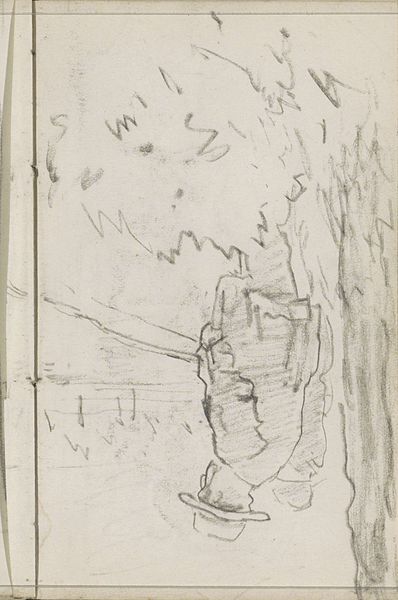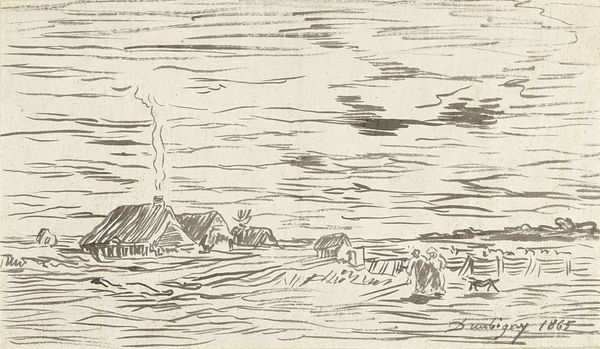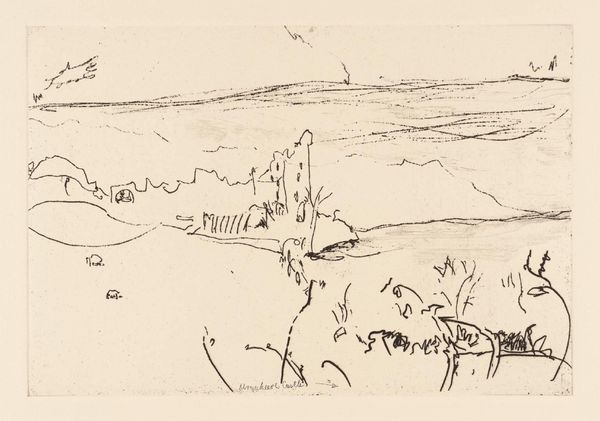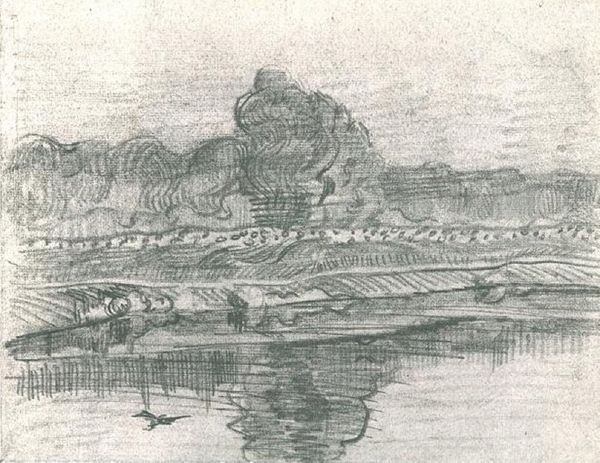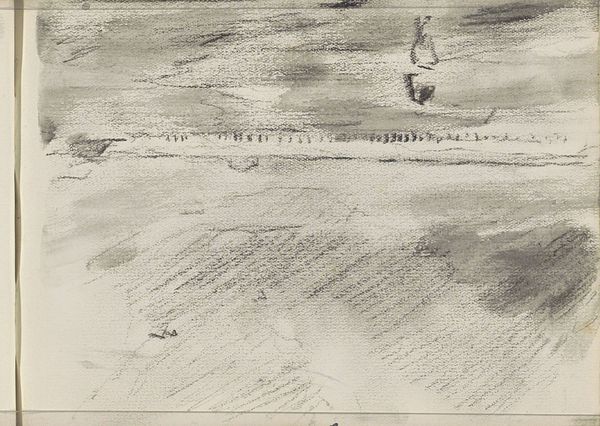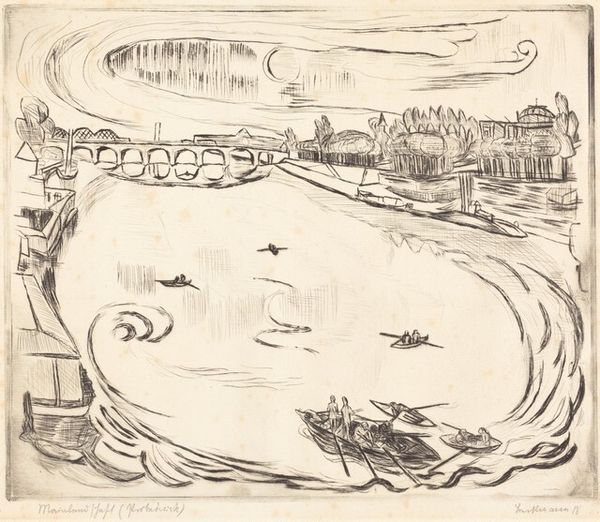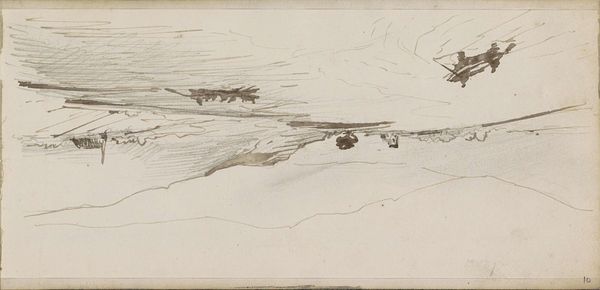
drawing, paper, ink
#
drawing
#
landscape
#
paper
#
ink
#
line
#
post-impressionism
Copyright: Public domain
Curator: Look at this rapid sketch, a "Wheat Fields" drawing completed by Vincent van Gogh in 1890. It resides here, at the Van Gogh Museum. Editor: My first impression is restlessness. The landscape seems sketched rather urgently, there's a real sense of energetic observation at work here. Curator: The energy comes across, undoubtedly. Observe the dynamic strokes defining each element, executed with ink on paper, seemingly without preliminary studies. Each line articulates the curvature and definition in planes from front to back. What structural patterns can we recognize here? Editor: Well, the mark-making is pretty consistent in the foreground with those long strokes giving a very strong sense of wheat field that meets the sky. I can almost feel the tactile sensation of paper under his hand. And how his cross-hatching becomes not just shading but palpable texture, reflecting his urgent engagement with the harvest, or more abstractly with processes, time, and labor? Curator: You see materiality foregrounded as subject, I analyze those diagonal hatchings you mention primarily as pictorial tools that build to implied depth, spatial arrangement is built into every stroke as are his chosen implements that enable such expressiveness. Note also the perspective and line density which is designed for your eye to be brought further into the space. Editor: To be honest, it feels raw and unfinished, yet undeniably powerful because the visible evidence of process becomes a potent part of the artwork. There are visible stains here and there. Those small visual accidents of time are speaking of its creation, which allows me, as the audience, to think about the people or spaces behind their production. I start considering not just what but also who it touches in his world. Curator: I see your point regarding the emphasis on materiality and process, though it risks overshadowing the semiotic weight carried in the overall formal composition. For me, this landscape is powerful in its ability to transform observed reality through art, while containing some of van Gogh's essence itself through line work alone. Editor: True. Ultimately it does connect both the material world of labour and his personal expression. Curator: Thank you. This has provided insightful avenues through which audiences might better appreciate "Wheat Fields".
Comments
No comments
Be the first to comment and join the conversation on the ultimate creative platform.


